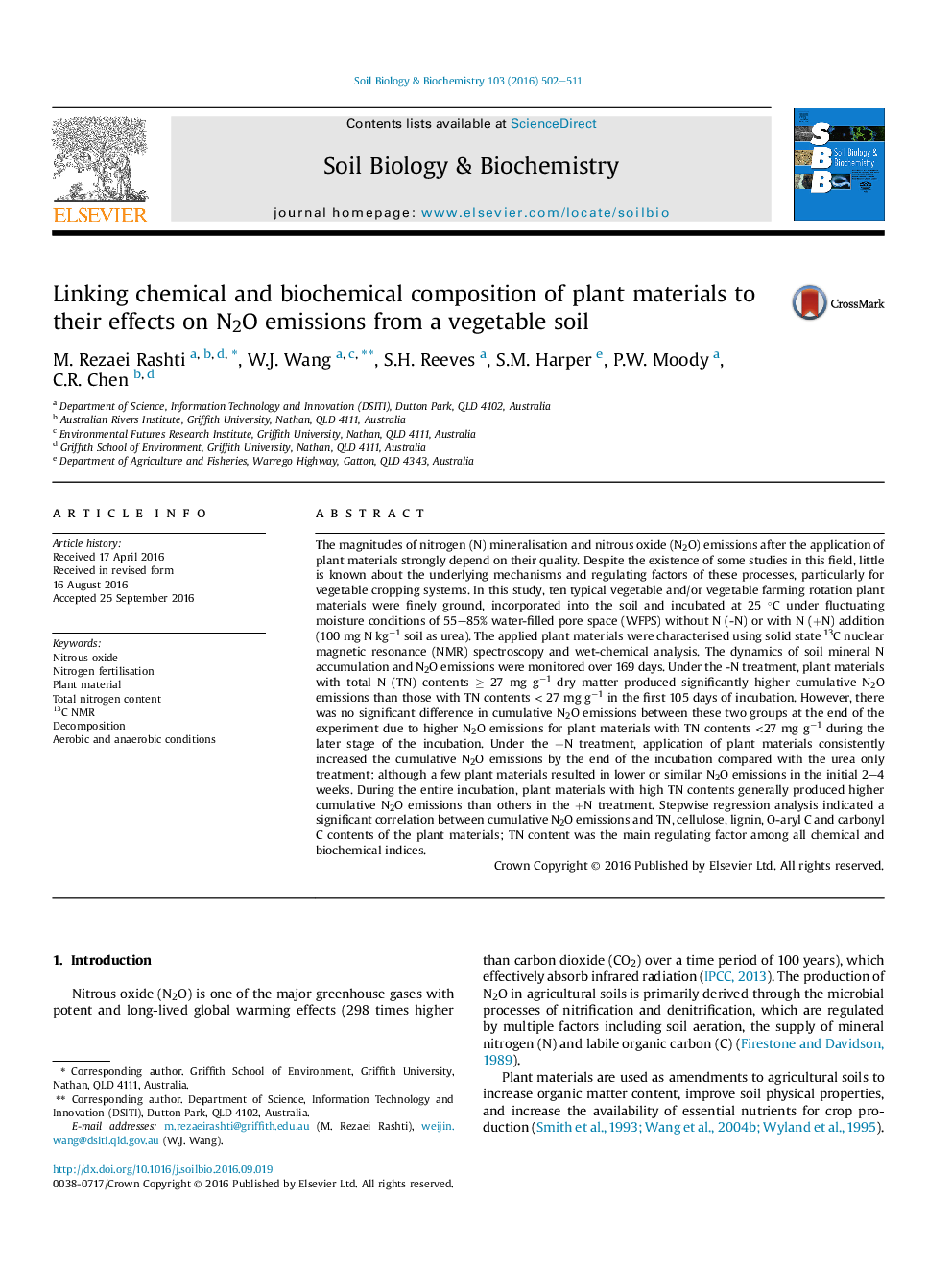| کد مقاله | کد نشریه | سال انتشار | مقاله انگلیسی | نسخه تمام متن |
|---|---|---|---|---|
| 8363366 | 1542581 | 2016 | 10 صفحه PDF | دانلود رایگان |
عنوان انگلیسی مقاله ISI
Linking chemical and biochemical composition of plant materials to their effects on N2O emissions from a vegetable soil
دانلود مقاله + سفارش ترجمه
دانلود مقاله ISI انگلیسی
رایگان برای ایرانیان
کلمات کلیدی
موضوعات مرتبط
علوم زیستی و بیوفناوری
علوم کشاورزی و بیولوژیک
دانش خاک شناسی
پیش نمایش صفحه اول مقاله

چکیده انگلیسی
The magnitudes of nitrogen (N) mineralisation and nitrous oxide (N2O) emissions after the application of plant materials strongly depend on their quality. Despite the existence of some studies in this field, little is known about the underlying mechanisms and regulating factors of these processes, particularly for vegetable cropping systems. In this study, ten typical vegetable and/or vegetable farming rotation plant materials were finely ground, incorporated into the soil and incubated at 25 °C under fluctuating moisture conditions of 55-85% water-filled pore space (WFPS) without N (-N) or with N (+N) addition (100 mg N kgâ1 soil as urea). The applied plant materials were characterised using solid state 13C nuclear magnetic resonance (NMR) spectroscopy and wet-chemical analysis. The dynamics of soil mineral N accumulation and N2O emissions were monitored over 169 days. Under the -N treatment, plant materials with total N (TN) contents â¥Â 27 mg gâ1 dry matter produced significantly higher cumulative N2O emissions than those with TN contents < 27 mg gâ1 in the first 105 days of incubation. However, there was no significant difference in cumulative N2O emissions between these two groups at the end of the experiment due to higher N2O emissions for plant materials with TN contents <27 mg gâ1 during the later stage of the incubation. Under the +N treatment, application of plant materials consistently increased the cumulative N2O emissions by the end of the incubation compared with the urea only treatment; although a few plant materials resulted in lower or similar N2O emissions in the initial 2-4 weeks. During the entire incubation, plant materials with high TN contents generally produced higher cumulative N2O emissions than others in the +N treatment. Stepwise regression analysis indicated a significant correlation between cumulative N2O emissions and TN, cellulose, lignin, O-aryl C and carbonyl C contents of the plant materials; TN content was the main regulating factor among all chemical and biochemical indices.
ناشر
Database: Elsevier - ScienceDirect (ساینس دایرکت)
Journal: Soil Biology and Biochemistry - Volume 103, December 2016, Pages 502-511
Journal: Soil Biology and Biochemistry - Volume 103, December 2016, Pages 502-511
نویسندگان
M. Rezaei Rashti, W.J. Wang, S.H. Reeves, S.M. Harper, P.W. Moody, C.R. Chen,